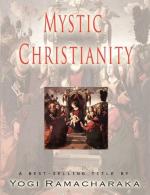as having been written by St. Matthew, with his own
hand, during his ministry; and that the Gospel, word
for word, is the work of this great apostle.
This idea, however, is not held for a moment by the
educated clergy, as may be seen by a reference to
any prominent theological work of late years, or even
in the pages of a good encyclopedia. The investigators
have made diligent researches concerning the probable
authorship of the New Testament books and their reports
would surprise many faithful church-goers who are
not acquainted with the facts of the case. There
is no warrant, outside of tradition and custom, for
the belief that Matthew wrote the Gospel accredited
to him, at least in its present shape. Without
going deeply into the argument of the investigators
(which may be found in any recent work on the History
of the Gospels) we would say that the generally accepted
conclusion now held by the authorities is that the
Gospel commonly accredited to St. Matthew is the work
of some unknown hand or hands, which was produced
during the latter part of the first century A.D.,
written in Greek, and most likely an enlargement or
elaboration of certain Aramaic writings entitled, “Sayings
of Jesus,” which are thought to have been written
by Matthew himself. In other words, even the
most conservative of the critics do not claim that
the Gospel of St. Matthew is anything more than an
enlargement, elaboration or development of Matthew’s
earlier writings, written many years before the elaboration
of the present “Gospel.” The more
radical critics take an even less respectful view.
This being the fact, it may be readily seen how easy
it would have been for the latter-day “elaborator”
to introduce the then current legend of the Virgin
Birth, borrowed from pagan sources.
As a further internal evidence of such interpolation
of outside matter, the critics point to the fact that
while the Gospel of Matthew is made to claim that
Joseph was merely the reputed father of the
child of Mary, the same Gospel, in its very first chapter
(Matt. 1) gives the genealogy of Jesus from
David to Joseph the husband of Mary, in order
to prove that Jesus came from the “House of David,”
in accordance with the Messianic tradition. The
chapter begins with the words, “The book of
the generation of Jesus Christ, the son of David,
the son of Abraham” (Matt. 1), and then
goes on to name fourteen generations from Abraham
to David; fourteen generations from David to the days
of the carrying away into Babylon; and fourteen generations
from the Babylonian days until the birth of Jesus.
The critics call attention to this recital of Jesus’s
descent, through Joseph, from the House of David,
which is but one of the many indications that the
original Matthew inclined quite strongly to the view
that Jesus was the Hebrew Messiah, come to reign upon
the throne of David, rather than a Divine Avatar or
Incarnation.




